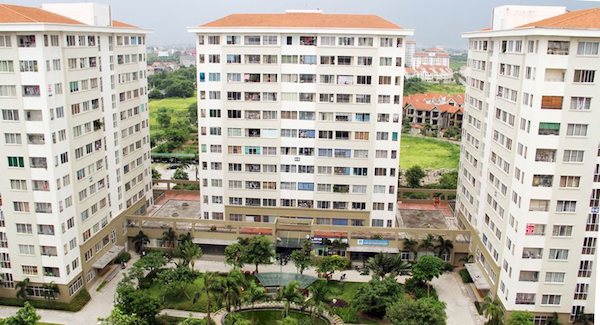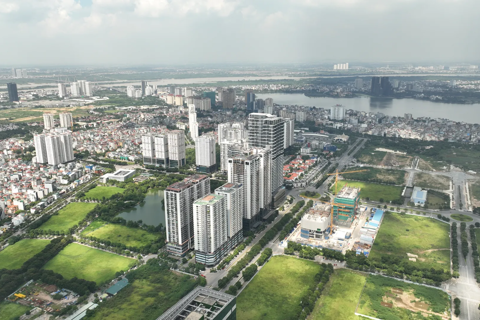Hanoi to pour US$19.2-billion in housing development in 2021-2025 period
The average floor area per person in the city is expected to reach around 27.6-29.5 square meters, taking the combined newly developed housing area to 20.44 million square meters and 25,000 social apartments.
The rapid urbanization rate is putting Hanoi under huge pressure to meet the growing demand for housing, for which new projects and residential areas worth VND437 trillion ($19.2 billion) are under construction and help improve the people’s living standards.
| Developing housing projects remains a priority for Hanoi in the 2021-2025 period. Photo: The Hanoi Times |
Under program No.03 of the municipal Party Committee on urban economic development and renovation in the 2021-2025 period, the city is set to speed up urban development towards sustainability, smart, and green growth for greater climate resilience.
A key criterion in this program is to increase the average housing space per person in the city to around 27.6-29.5 square meters, taking the combined newly developed housing area to 20.44 million square meters and 25,000 social apartments.
To realize this goal, the Hanoi People’s Committee has approved the city’s housing development plan for the 2021-2025 period, which maps out solutions to realize new projects to meet the people’s desire for settlement and create a quality living environment.
The investment capital for the plan is estimated at VND437 trillion ($19.2 billion), of which the state budget would allocate VND5.8 trillion ($255.3 million) for the construction of houses for resettlement, developing social housing, and the reparation of old apartments.
The city would also mobilize social resources for the development of commercial houses and other real estate projects. For areas subject to building social housing, the rate of apartments is set at 90%, and the remaining 10% for detached houses.
Nguyen Truc Anh, director of the Department of Planning and Architecture of Hanoi, noted ten years after the implementation of the city’s construction planning until 2030, the average floor area per person at urban areas expanded by a modest of 1.2 square meters, lower than the expectation.
“Hanoi would consider revising the master plan to ensure greater efficiency in the housing development and improve the people’s living standards,” he told The Hanoi Times.
In this regard, the housing development would aim at addressing the high population density in the core districts of Hanoi and expand new satellite urban areas to accommodate people relocated from downtown.
Director of the Construction Department Vo Nguyen Phong added as part of the program, the city would push for the renovation and reconstruction of 10 old buildings in the 2021-2025 period, including Kim Lien, Trung Tu, Khuong Thuong, Thanh Xuan Bac, Thanh Xuan Nam, Nghia Tan, and four areas under the D level, the most dangerous of the four-scale level including Giang Vo, Thanh Cong, Ngoc Khanh and the office building of the Ministry of Justice.
“The approval process and detailed planning for these areas are set to be completed in the fourth quarter of 2022, and the construction will kick off in the second quarter of 2023,” Phong told The Hanoi Times.
| According to the municipal Construction Department, Hanoi has completed six commercial housing projects during the first 10 months of 2021, equivalent to 351,924 square meters of floors, 2,456 detached houses, and 496 apartments; two social housing projects of 88,211 square meters of floors, 1,234 apartments; five resettlement housing projects or 105,760 square meters of floor, and 1,322 apartments. |


![[Longform] Renovation of old apartment buildings must keep social cohesion: experts](https://cdn-media.hanoitimes.vn/2022/07/30/rsz_ddffcover1.jpg?w=480&h=320&q=100)









